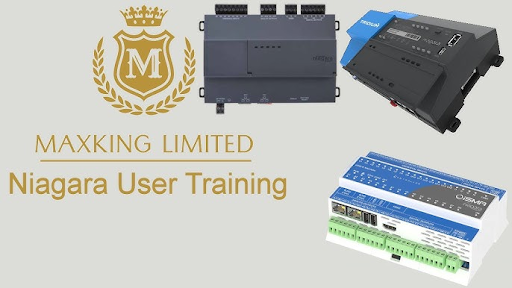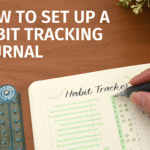If you’re wondering how to track trend in Niagara 4, you’re in the right place. Learning how to track trend in Niagara 4 can sound tricky at first, but don’t worry—it’s not as hard as it sounds. This guide is made just for you, using very simple words. Whether you’re new to building controls or just trying to get better at using Niagara 4, understanding trends is super important. Trends help you see what’s going on with your data over time—like temperatures, energy use, or machine status. With trends, you can fix problems early and make smarter choices. Think of it like a timeline that shows how things change. You don’t need to be a tech expert to start. Just follow the easy steps below and you’ll feel more confident each time you use Niagara 4.Let’s dig a little deeper. Niagara 4 is a powerful tool used in buildings to control things like lights, heating, and air. But knowing how to track trend in Niagara 4 means you can actually see how well things are working. Want to know if the AC runs too much? Or if lights are staying on when no one’s around? Trends show you that. They collect data every minute, hour, or day, and then show it in charts or graphs. This helps you save energy, cut down on costs, and fix small issues before they turn big. When you understand trends, you don’t just guess—you know. This blog will walk you through what a trend is, why it matters, how to set one up, and how to make the most of it. No confusing words, no long tech talks. Just easy steps and helpful tips to get you going.
What Is a Trend in Niagara 4 and Why Should You Care
A trend in Niagara 4 is like a timeline that shows how something changes over time. It can track things like temperature, lights, or energy use in a building. When you see how things change, you can fix problems early or save money. For example, if your heater runs too long, a trend will show that. This helps you make better choices. Even if you are new to Niagara 4, understanding trends is a big help. Trends give you a clear picture instead of just guessing. They’re like your building’s memory. You don’t need to be super smart to use them—just learn a little and try it out. Once you start, you’ll see how helpful it is every day.
Why Tracking Trends in Niagara 4 Makes Your Building Smarter
Tracking trends in Niagara 4 helps your building think better. When you use trends, you know what is working and what is not. For example, if a light is on all night, the trend can show that. Then, you can fix it and save energy. Smart buildings use less power and run better. Trends help you understand your building’s habits. It’s like watching how your house behaves. You can even set up alerts if something is wrong. That means your building becomes smart without much effort. You just need to keep an eye on the data, and it will help you make better choices every day.
How to Track Trend in Niagara 4 Without Any Tech Skills
If you don’t know much about tech, don’t worry—you can still track trend in Niagara 4 easily. First, open your Niagara 4 system and look for the part called “history” or “trend.” You can pick something you want to track, like temperature. Then, you set how often you want it to record—maybe every 10 minutes or once an hour. You also choose how long to keep the data. After that, the system will start saving the numbers. Later, you can look at charts or graphs to see what happened. Just click and read—no coding needed! It’s okay to take your time and learn step by step.
Step-by-Step: How to Track Trend in Niagara 4 Like a Pro
To track a trend in Niagara 4 like a pro, start by opening the Niagara Workbench. Find the “History Config” or “History Group.” Right-click and choose to add a new history. Give it a name that helps you remember what it’s for. Now link it to the device or point you want to track, like a thermostat. Set how often it should record data, maybe every 15 minutes. Then, save everything and restart the service. To view your data, open the “History Chart.” Pick your trend and choose a time range. You’ll see a graph that shows changes over time. That’s it! You’re now tracking like a pro.
Common Mistakes to Avoid When You Track Trend in Niagara 4
Many people make simple mistakes when they first try to track trend in Niagara 4. One mistake is forgetting to set how often the trend should record data. If it records too often, it can slow the system down. Another mistake is not naming the trend clearly. Use easy names like “Room1_Temp” so you don’t get confused later. Also, don’t forget to save your settings! Sometimes people set everything and close the program without saving. That means you lose your work. And last, always check that the trend is linked to the right device. If it’s not, your chart won’t show anything.
Real-Life Uses: How Trend Tracking Helps in Niagara 4 Projects
Trend tracking in Niagara 4 helps in many real-life ways. In big buildings, it shows if the air or lights are working too much. If energy bills go up, trends help find the problem. They can show if a room stays too hot or cold. That way, you can fix the HVAC or check for broken windows. Trend data also helps managers show proof of work. Like if someone says the heater didn’t work, you can show the graph. It even helps plan better settings to save money. From schools to offices, trend tracking makes every project smarter and more efficient.
Best Settings to Use When You Track Trend in Niagara 4
Choosing the best settings for tracking trend in Niagara 4 is important. First, decide how often you want to collect data—this is called the “interval.” If things change fast, use shorter intervals like every 5 minutes. For slow changes, maybe every hour is okay. Next, choose how long to save the data. A week or a month is good for most cases. Also, make sure your chart shows the right time range, like “last 24 hours” or “last 7 days.” Try not to collect too much data or it will slow down your system. Start small, and adjust as you learn more.
Troubleshooting: What to Do if Niagara 4 Trend Isn’t Working
If your trend in Niagara 4 is not working, don’t worry—try a few simple steps. First, check if your trend is linked to the correct point or device. Sometimes, it’s not connected and doesn’t collect data. Next, see if your history service is running. If it’s off, trends can’t record anything. Also, make sure your settings are saved and the system is restarted. Look at the chart—if it’s blank, maybe the time range is too short. Try changing it to a longer one. If you still don’t see data, ask someone for help or look in the help menu.
Conclusion
Now you know how to track trend in Niagara 4 without feeling lost. It’s not as hard as it seems when you take it step by step. You just need to set it up once, and then your data starts showing up in neat charts. That way, you always know what’s happening in your building.
Using trends helps you save energy, spot problems early, and make smarter choices. You don’t need to be a tech expert. Just try, learn slowly, and you’ll get better. Niagara 4 gives you the tools, and now you know how to use them in a smart and easy way.
FAQs
Q: What is trend tracking in Niagara 4?
A: Trend tracking in Niagara 4 means recording data over time so you can see changes, like temperature or energy use.
Q: Do I need coding skills to track trends in Niagara 4?
A: No, you don’t need coding. You just follow a few simple steps in the system.
Q: Why is my trend chart not showing any data?
A: Check if the point is linked, the history is running, and the time range is set correctly.



